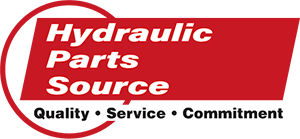Hydraulic System Hazards: Avoiding Safety Issues from the Beginning
Hydraulic systems have some real muscle, capable of allowing the heaviest equipment to perform giant tasks with the use of pressurized fluid.
But within these robust systems, and the parts needed for them to operate, are unique and potentially hazardous problems.
Fluid power distributors should be aware of which safety precautions to take during remanufacturing and installation, as well as safety procedures to provide adequate customer support. Although this article does not cover all possible hazards, we’ll review some of the most notable.
Knowing what it takes to avoid mishaps such as oil leakage or pressure overload can help lead to safer decisions, and as a result, it can help end-users avoid injury.
It Begins with Quality Design
Protecting end-users from faulty parts begins with assuring that they are getting pumps, motors, and valves that meet high quality standards. Making sure they are aware of the correct part specifications and best practices can also help avoid future safety issues.To help clients protect end-users from safety mistakes due to faulty equipment, distributors should assure:
- Quality design
- Correct specifications are being met
- Best practices are being used
Safety Best Practices
When it comes to installation and support, distributors can also help their end-users by knowing best practices that maximize performance and avoid safety concerns.These practices include:
- Understanding operating instructions and never removing labels
- Using the correct viscosity of hydraulic oil for the system
- Maintaining correct reservoir fluid levels to dissipate heat and prevent air from being sucked into the system through the pump’s inlet
- Using the correct heat exchanger to maintain optimum temperatures
- Installing a fluid temperature alarm
- Performing regular inspections
Common Hazards from Equipment Failure - and How to Avoid Them
Component failures can lead to a variety of hazards if rules for safe operation and maintenance are not followed. Safety precautions can help avoid these, but awareness of some of the most common causes of injury can help provide adequate caution during installation or maintenance.The most common safety hazard involves pinhole leaks to hoses, which can release toxic fluid. Following best practices to inspect hoses regularly, replacing any that show signs of wear or leakage, can prevent serious injury.
Other common issues that create the right environment for a safety hazard include:- Beginning work while there is still pressure in the system
- Ruptures that occur due to improper couplings of low- and high-pressure systems
- Component removal or adjustments that are made while machine is running
- Removing or adjusting components without releasing pressure
To avoid other common errors, release pressure by opening the relief valve before removing or adjusting components. Shut off the engine and do not remove components while working units are resting on the ground, safety stands, or blocks.
Other Hydraulic Fluid Hazards
Hydraulic fluids present their own risks. Obvious safety measures, such as wearing protective gear, will help avoid injury when fluid spills occur.Some other safety tips to avoid fluid-related safety hazards include:
- Monitoring hydraulic system temperatures to prevent combustion, explosions, and fires
- Cleaning fluid spills promptly to avoid slips and falls
- Considering eco-friendly fluids to prevent contaminating soil or water
- Determining sources of internal leaks
Making Safety a Priority
Fluid power distributors may not be hands-on users, but given their proximity and relationship to the users of the products in question, they should be aware of the safety precautions needed for remanufacturing and installation, as well as to provide adequate customer support.Beginning by assuring their end-users are getting quality designed parts, correct specifications are being met, and making sure best practices are being used can front-load protections from the distribution point.
Avoiding hazards begins with quality, but is assured with the knowledge of specific safety procedures that can be taken while hydraulic components are being remanufactured, installed, and in use.
Contact us today to experience OE quality for a fraction of the time and cost by calling (888) 477-7278 or get a quote by emailing sales@hydparts.com.

